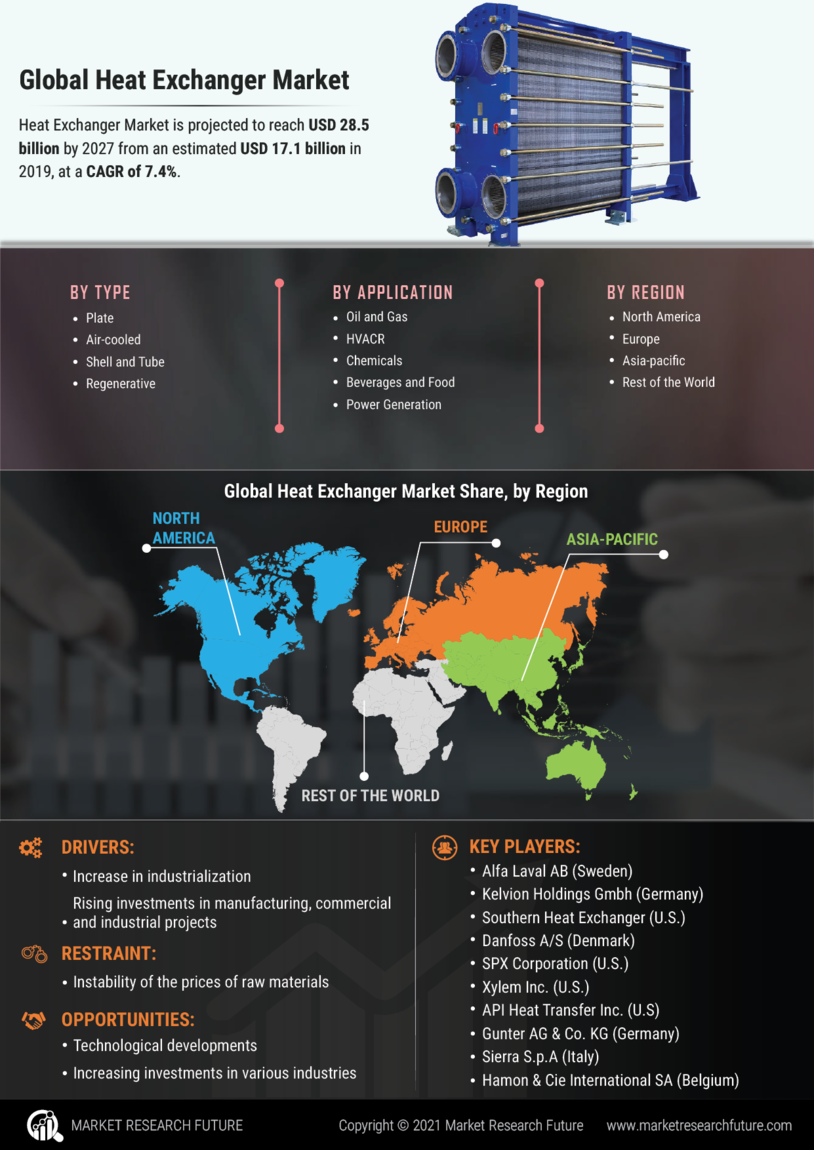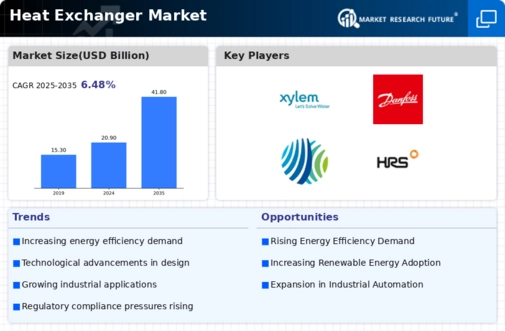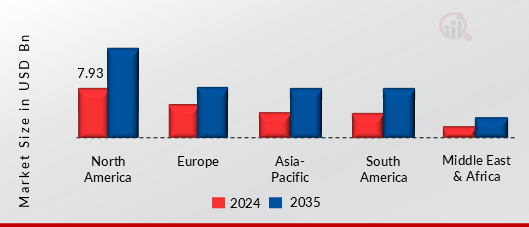Technological Advancements
Technological innovations play a pivotal role in shaping the Global Heat Exchanger Market Industry. The introduction of new materials, such as advanced alloys and composites, enhances the performance and longevity of heat exchangers. Furthermore, the integration of smart technologies, including IoT and automation, allows for real-time monitoring and optimization of heat transfer processes. These advancements not only improve efficiency but also reduce maintenance costs. As a result, the market is likely to witness significant growth, with projections indicating a potential increase to 41.8 USD Billion by 2035, driven by the continuous evolution of heat exchanger technologies.
Market Trends and Projections
The Global Heat Exchanger Market Industry is characterized by dynamic trends and projections that reflect its evolving landscape. The market is anticipated to reach 20.9 USD Billion in 2024, with a robust growth trajectory leading to an expected valuation of 41.8 USD Billion by 2035. The compound annual growth rate (CAGR) of 6.49% from 2025 to 2035 indicates a sustained demand for heat exchangers across various sectors. This growth is influenced by factors such as technological advancements, regulatory compliance, and the increasing focus on energy efficiency, positioning the industry for a promising future.
Expansion of Industrial Sector
The expansion of the industrial sector globally is a critical driver for the Global Heat Exchanger Market Industry. As manufacturing processes become more complex and energy-intensive, the need for efficient heat transfer solutions becomes paramount. Industries such as chemical processing, pharmaceuticals, and food and beverage are increasingly investing in heat exchangers to enhance productivity and reduce energy consumption. This trend is expected to bolster market growth, with a projected compound annual growth rate (CAGR) of 6.49% from 2025 to 2035. The industrial sector's growth trajectory underscores the essential role of heat exchangers in optimizing operational efficiency.
Rising Demand for Energy Efficiency
The Global Heat Exchanger Market Industry is experiencing a notable surge in demand for energy-efficient solutions. As industries strive to reduce operational costs and comply with stringent environmental regulations, heat exchangers are increasingly recognized for their ability to enhance energy recovery and minimize waste. For instance, sectors such as oil and gas, power generation, and HVAC are adopting advanced heat exchanger technologies to optimize thermal management. This trend is projected to contribute to the market's growth, with the industry expected to reach 20.9 USD Billion in 2024, reflecting a growing awareness of energy conservation and sustainability.
Increasing Applications in Renewable Energy
The increasing applications of heat exchangers in renewable energy systems are shaping the Global Heat Exchanger Market Industry. As the world transitions towards sustainable energy sources, heat exchangers are integral in technologies such as solar thermal systems, geothermal energy, and biomass energy production. These applications not only enhance energy efficiency but also facilitate the integration of renewable sources into existing energy grids. The growing emphasis on renewable energy is expected to drive market expansion, aligning with global efforts to reduce reliance on fossil fuels and promote cleaner energy alternatives.
Regulatory Compliance and Environmental Concerns
Regulatory compliance and growing environmental concerns are significantly influencing the Global Heat Exchanger Market Industry. Governments worldwide are implementing stringent regulations aimed at reducing greenhouse gas emissions and promoting energy efficiency. This regulatory landscape compels industries to adopt heat exchangers that meet these standards, thereby driving market demand. For example, the European Union's directives on energy efficiency have led to increased investments in advanced heat exchanger technologies. As industries adapt to these regulations, the market is poised for growth, reflecting a broader commitment to sustainability and environmental stewardship.






